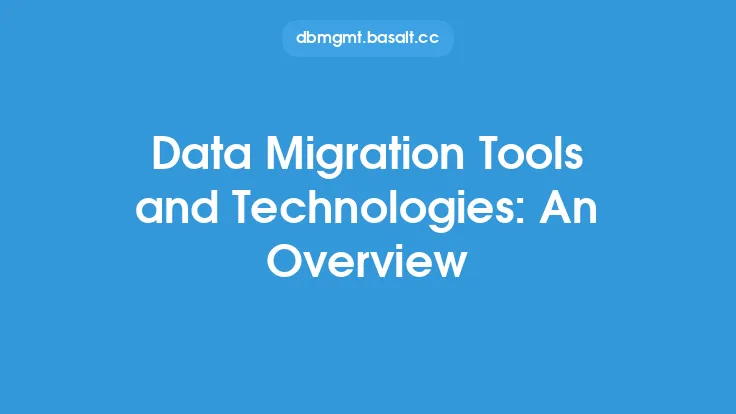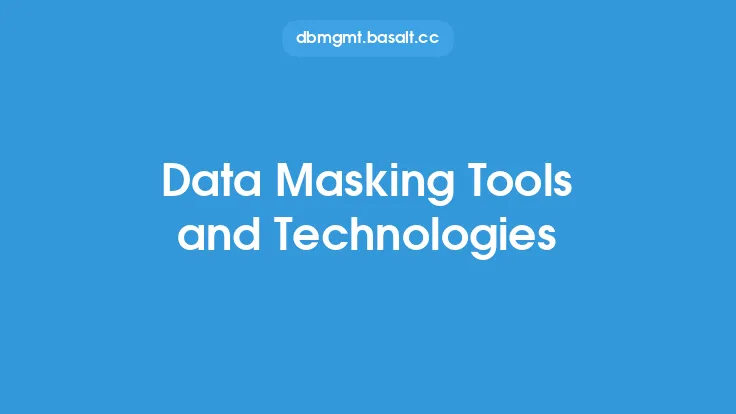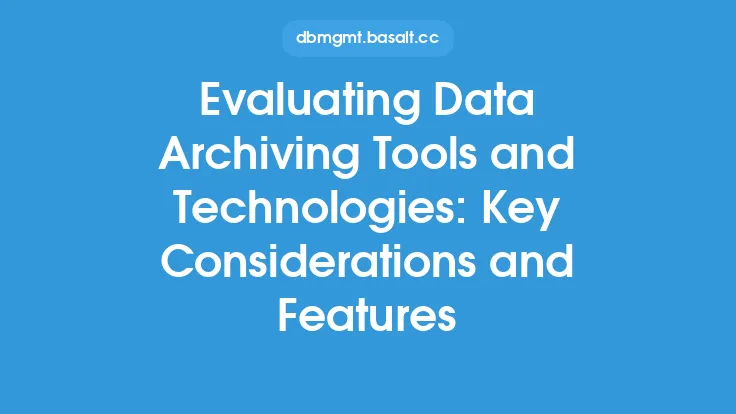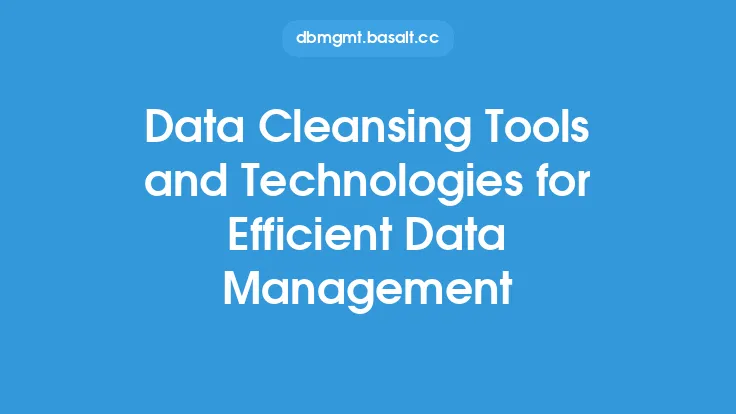Data integration is a critical process in database implementation that involves combining data from multiple sources into a unified view, providing a single, accurate, and up-to-date representation of an organization's data. To achieve this, various data integration tools and technologies are employed, each with its strengths and weaknesses. In this article, we will delve into the world of data integration tools and technologies, exploring their features, functionalities, and applications.
Introduction to Data Integration Tools
Data integration tools are software applications designed to extract, transform, and load (ETL) data from multiple sources into a target system, such as a data warehouse, data lake, or operational database. These tools provide a range of features, including data mapping, data transformation, data quality, and data governance. Some popular data integration tools include Informatica PowerCenter, Microsoft SQL Server Integration Services (SSIS), and Talend. These tools support various data sources, including relational databases, cloud-based data stores, and big data platforms.
Data Integration Technologies
Data integration technologies refer to the underlying frameworks, architectures, and standards that enable data integration. Some key data integration technologies include:
- Service-Oriented Architecture (SOA): SOA is a design pattern that structures an application as a collection of services that communicate with each other. In data integration, SOA enables the creation of reusable services that can be used to integrate data from multiple sources.
- Enterprise Service Bus (ESB): ESB is a messaging framework that enables the integration of applications and services across an enterprise. In data integration, ESB provides a standardized way of exchanging data between applications and services.
- Representational State of Resource (REST): REST is an architectural style for designing networked applications. In data integration, REST provides a simple and flexible way of accessing and manipulating data from multiple sources.
- Java Message Service (JMS): JMS is a messaging standard that enables the exchange of messages between applications and services. In data integration, JMS provides a reliable and scalable way of integrating data from multiple sources.
Data Virtualization
Data virtualization is a data integration technology that provides a virtualized view of data from multiple sources, without physically moving or copying the data. Data virtualization tools, such as Denodo and TIBCO Data Virtualization, provide a layer of abstraction between the data sources and the consuming applications, enabling real-time access to integrated data. Data virtualization is particularly useful in scenarios where data is distributed across multiple sources, and physical data integration is not feasible.
Cloud-Based Data Integration
Cloud-based data integration refers to the use of cloud-based platforms and services to integrate data from multiple sources. Cloud-based data integration tools, such as AWS Glue and Google Cloud Data Fusion, provide a scalable and on-demand way of integrating data, without the need for expensive hardware or software investments. Cloud-based data integration is particularly useful in scenarios where data is distributed across multiple cloud-based sources, and physical data integration is not feasible.
Big Data Integration
Big data integration refers to the process of integrating large volumes of structured and unstructured data from multiple sources, using big data technologies such as Hadoop and Spark. Big data integration tools, such as Apache NiFi and Apache Beam, provide a scalable and flexible way of integrating big data, enabling organizations to gain insights and make decisions based on large volumes of data. Big data integration is particularly useful in scenarios where data is generated from multiple sources, such as social media, IoT devices, and sensors.
Real-Time Data Integration
Real-time data integration refers to the process of integrating data from multiple sources in real-time, enabling organizations to respond quickly to changing business conditions. Real-time data integration tools, such as Apache Kafka and Apache Storm, provide a scalable and reliable way of integrating data in real-time, enabling organizations to gain insights and make decisions based on up-to-the-minute data. Real-time data integration is particularly useful in scenarios where data is generated from multiple sources, such as financial transactions, sensor data, and social media.
Data Integration and Artificial Intelligence
Data integration and artificial intelligence (AI) are closely related, as AI algorithms require integrated data to function effectively. Data integration tools and technologies provide the foundation for AI applications, enabling organizations to integrate data from multiple sources and create a unified view of their data. AI algorithms, such as machine learning and deep learning, can then be applied to the integrated data to gain insights and make predictions. Data integration and AI are particularly useful in scenarios where data is generated from multiple sources, such as customer interactions, sensor data, and social media.
Conclusion
In conclusion, data integration tools and technologies play a critical role in database implementation, enabling organizations to combine data from multiple sources into a unified view. From data integration tools and technologies to data virtualization, cloud-based data integration, big data integration, real-time data integration, and data integration and AI, there are various approaches and solutions available to meet the diverse needs of organizations. By understanding the features, functionalities, and applications of these tools and technologies, organizations can make informed decisions about their data integration strategies and create a solid foundation for their database management systems.





